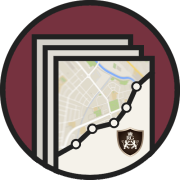Why the Solo 401(k) is the Best Solution
by Peter Rizzo

This is the time of year where business owners or 1099 contractors should decide the best plan to put money away for retirement.
Even though a SEP IRA is the most used plan in the financial industry, we believe that hands down the Solo 401k is the best solution. Below are some of the reasons:
A Simplified Employee Pension Individual Retirement Arrangement (SEP IRA) has traditionally been the most popular retirement plan for the self-employed and small business owner. While a SEP IRA does offer high annual contribution limitations, there is another retirement plan that offers better retirement options for the self-employed or small business with no employees – the Solo 401(k) plan, also known as the individual 401(k) or self-employed 401(k) plan.
Before the Economic Growth and Tax Relief Reconciliation Act of 2001 (EGTRRA) became effective in 2002, there was no compelling reason for an owner-only business to establish a Solo 401(k) plan because the business owner could generally receive the same benefits by adopting a profit-sharing plan or a SEP IRA. After 2002, EGTRRA paved the way for an owner-only business to put more money aside for retirement, gain additional options, as well as operate a more cost-effective retirement plan than a SEP IRA.
There are a number of options that are specific to Solo 401(k) plans that make it a far more attractive retirement option for a self-employed individual or small business owner than a SEP IRA:
- Reach your Maximum Contribution Amount Quicker: A Solo 401(k) includes both an employee and profit-sharing contribution option, whereas, a SEP IRA is purely a profit-sharing plan. Under the 2022 Solo 401(k) contribution rules, a plan participant under the age of 50 can make a maximum employee deferral contribution in the amount of $20,500. That amount can be made in pre-tax or after-tax (Roth). On the profit-sharing side, the business can make a 25% (20% in the case of a sole proprietorship or single member LLC) profit sharing contribution up to a combined maximum, including the employee deferral, of $61,000
For plan participants over the age of 50, an individual can make a maximum employee deferral contribution in the amount of $27,000. That amount can be made in pre-tax or after-tax (Roth). On the profit-sharing side, the business can make a 25% (20% in the case of a sole proprietorship or single member LLC) profit sharing contribution up to a combined maximum, including the employee deferral, of $67,500.
Whereas, a SEP IRA would only allow for a profit-sharing contribution. Hence, a participant in a SEP IRA would be limited to 25% (20% in the case of a sole proprietorship or single member LLC) profit sharing contribution up to a combined maximum of $61,000 for 2022 No employee deferral exists for a SEP IRA. For example, Ben, who is 60 years old, owns 100% of an S Corporation with no full time employees. Ben earned $100,000 in self-employment W-2 wages for 2022. If Ben had a Solo 401(k) Plan established for 2022, Ben would be able to defer approximately $52,000 for 2022 (a $27,000 employee deferral, which could be pre-tax, after-tax or Roth, and 25% of his compensation giving him $52,000 for the year). Whereas, if Ben established a SEP IRA, Ben would only be able to defer approximately $25,000 (25% if his compensation) for 2015.
- No catch-up Contributions with SEP IRA: With a Solo 401(k) you can make a contribution of up to $61,000 to the plan each tax year ($67,500 if the participant is over the age of 50) in 2022. However, with a SEP IRA, the maximum amount that can be deferred is $61,000 since a SEP IRA does not offer any catch-up contributions.
- No Roth Feature: A Solo 401(k) plan can be made in pre-tax, after-tax or Roth format. Whereas, in the case of a SEP IRA, contributions can only be made in pre-tax format. SEP IRA contributions can then be converted to a Roth IRA, but the initial SEP IRA contribution must be in pre-tax. In addition, a contribution of $20,500 ($27,000, if the plan participant is over the age of 50) can be made to a Solo 401(k) Roth account directly.
- Tax-Free Loan Option: With a Solo 401(k), assuming your plan documents allow for it, you can borrow up to $50,000 or 50% of your account value, whichever is less. The loan can be used for any purpose. With a SEP IRA, the IRA holder is not permitted to borrow even $1 dollar from the IRA without triggering a prohibited transaction.
- Use Nonrecourse Leverage and Pay No Tax: With a Solo 401(k), you can make a real estate investment using a nonrecourse loan without triggering the Unrelated Debt Financed Income Rules and the Unrelated Business Taxable Income (UBTI or UBIT) tax (Internal Revenue Code Section 514). However, the nonrecourse leverage exception found in Internal Revenue Code Section 514 is only applicable to 401(k) qualified retirement plans and does not apply to IRAs. In other words, using a self-directed SEP IRA to make a real estate investment involving non-recourse financing would trigger the UBTI tax, which could be close to 40 percent.
Take a look at both plans and see which one fits best. Investopedia has details of both plans here.
For more information you can contact me at [email protected] or set a time for a call here.


If I have a Checkbook IRA now (working for someone else), but I retire and start my own business, can I roll over the IRA into a Solo 401(k)? Are there tax implications if I do?